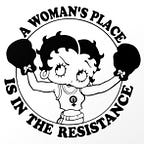Join or Die (2024), by Rebecca and Pete Davis
By joining a club, you can save democracy. But how?
Being part of a club is an activity that involves social and / or civic engagement. It demonstrates that you care about something, you show interest in something — be it religion, sports, sewing, reading or even collecting stamps. Clubs make us less individualistic and can make us live longer, as with them we find purpose in life. All these arguments to join a club are presented in the enlightening documentary “Join or Die”.
Harvard professor Robert Putnam authored the theory that links the participation in associations with democratic equilibrium by researching a representative government experiment in Italy, with the formation of independent governments in different regions, decentralizing the political power from Rome.
Economist Glenn Loury used the term “social capital” in 1972 to explain why black workers earned less than white workers — he found the answer in the perceived danger of letting black people gather. The term had been used before, also to proclaim that social networks — no, not the internet kind — have their value.
In the 1990s, after twenty years studying Italian politics, Robert Putnam returned to the USA and everything felt great. Except for one thing: the trust in the government was very low… and so was the number of people joining clubs, all kinds of clubs. To present the results of his research on the two seemingly unrelated phenomena, Putnam wrote a groundbreaking paper and later a book, both titled “Bowling Alone”. Soon he was under the radar, with all the joys and difficulties that fame brings.
But what causes the downward spiral that affects the number of people joining clubs? When Putnam asked an audience, one person answered it was the fault of “working women” — ew. The researcher then gave the answer: people go to fewer club gatherings because they spend more time watching TV. Today, the villains would be social networks. Because both TV and social networks cultivate individualism.
Is there a way to fix it? Yes, there is, because there was once a time when club gathering attendance was also low: the Gilded Age, by the end of the 19th century and beginning of the 20th. At that moment, there was a deep political polarization, distrust and a huge gap between the rich and the poor — does this sound familiar? Then, clubs started appearing, especially those organized by women and black folks.
The examples are few, but meaningful. Right in the beginning of “Join or Die” Tommy from Texas tells he joined a brotherhood after his brother passed away. Nurya from Michigan found the community she had been longing for in her church. Odilia is an immigrant in California who was happy in her motherland because she was part of groups there and finally found solace in her new place when she joined a club.
Sometimes we feel inside an animated zine, with all the creative techniques of animation and collage used to explain the plot points. The animation was done by Mark Lopez, a Texas-based successful animator. The choice to present the explanations through animation makes the subject, that can be described as “brainy”, approachable for all viewers.
Co-director Pete Davis was Robert Putnam’s pupil in college, which certainly made it smooth for him to make this film, following Putnam around and for sure making him comfortable in front of the cameras — not that the professor lacked experience at being interviewed. Debuting in feature films, co-director and co-producer Rebecca Davis has a history of producing for big companies, such as HBO and Netflix.
It’s not power versus organizations, it’s power through organizations. Attending a school board meeting, a church gathering, a book club — any and all organizations are valid if they make us feel less alone and more connected. In an über-connected world like the one we live in, it’s this kind of connection that we should look for: the meaningful one.
